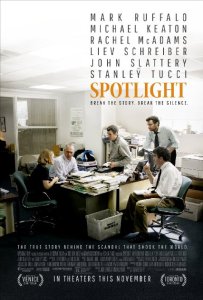 By Bill Kirtz
By Bill Kirtz
Print the legend?
Charles Fountain doesn’t.
Meticulously researched and colorfully written, his new book, “The Betrayal: The 1919 World Series and the Birth of Modern Baseball” (Oxford University Press, 290 pages, $27.95), offers a host of new information about the often-told 1919 Chicago Black Sox saga.
He’s unearthed a ton of fresh material, including the papers of American League founder Ban Johnson and the files of cover-up maestro Alfred Austrian.
Fountain, a long-time Northeastern University School of Journalism friend and colleague, sorts through the myriad versions of how and why the World Series was fixed, never resorting to easy conclusions. He separates what’s ain’t from what’s so. When the facts are murky, he’s content to present — not pontificate.
This tapestry of baseball and social history encompasses 19th-century game-throwing, the 1920s melange of politics, sports and gambling, and colorful portraits of legendary lawyers and sportswriters.
 We learn that “hippodroming” — game-fixing — is as old as organized baseball itself, as supposed amateurs took “sporting men”’s money to drop flies and strike out. And we see the machinations of White Sox owner Charles Comiskey and baseball commissioner Kenesaw Mountain Landis as they try to contain and manipulate the burgeoning Black Sox scandal.
We learn that “hippodroming” — game-fixing — is as old as organized baseball itself, as supposed amateurs took “sporting men”’s money to drop flies and strike out. And we see the machinations of White Sox owner Charles Comiskey and baseball commissioner Kenesaw Mountain Landis as they try to contain and manipulate the burgeoning Black Sox scandal.
Fountain, the author of two well-received sports books (on famed scribe Grantland Rice and on the history of spring training), is especially good on tracing the incestuous relationships between writers and their subjects — and on the wink-and-nod clubbiness and vicious newspaper competition that prevented the biggest baseball story of the (or perhaps any) era from leaking earlier.
“The Betrayal” is a treasure trove of bizarre incidents, including Keystone Kops detective efforts fueled with Scotch, fishing trips and apartment-sharing with a conspirator’s paramour. There are vignettes galore about larger-than-life characters like lawyer-jury rigger William Fallon and criminal mastermind Arnold Rothstein. Fountain even manages to bring in “Jazz Age siren” Peggy Hopkins Joyce for a cameo.
Fountain also offers a reporting primer. The criminal trial of seven players and four gamblers began in torrid heat. How hot? Ninety-four degrees. (Fountain looked up that day’s weather report.)
From Attell (Abe: boxer, bagman and one of the saga’s host of double-crossers) to Zork (Carl: gambler and plotter), “The Betrayal” is a richly detailed page-turner.
There’s only one real rattlesnake here but plenty of two-legged ones in executive offices and judicial robes — as well as in dugouts.
“The Betrayal” is a must-read for anyone interested in American sports, morality and justice — and how they occasionally mesh.
Bill Kirtz is an associate professor of journalism at Northeastern University.
 On Thursday night I had a chance to see an advance screening of “Spotlight,” sponsored by Northeastern’s School of Journalism and the College of Arts, Media and Design. And I was blown away. How often does a movie for which you have high expectations actually live up to them?
On Thursday night I had a chance to see an advance screening of “Spotlight,” sponsored by Northeastern’s School of Journalism and the College of Arts, Media and Design. And I was blown away. How often does a movie for which you have high expectations actually live up to them?



